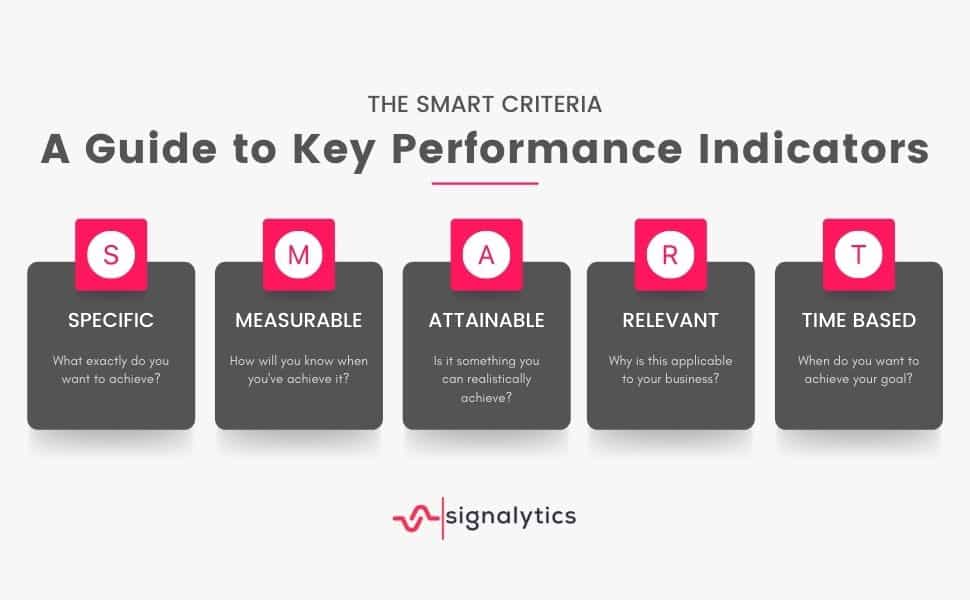Any serious business owner must know the direction their business is heading in each and every week.
The question is, how do you determine the health and success of your business? This is done by looking at Key Performance Indicators (KPIs). One common problem though is that many business owners don’t know what KPIs are and why they’re essential.
By the end of this article, you’ll learn the following:
- What KPIs are;
- Why they are crucial metrics every business owner should know;
- Important KPIs to keep tabs on; and
- How to incorporate these KPIs into your digital marketing campaign.
What’s more, we’ll even throw in examples of companies that have implemented these KPIs and achieved massive success.
Let’s begin.
What Are KPIs?
Key Performance Indicator (KPI), is a measurable value you use to evaluate how your campaign is progressing towards set objectives. They help you monitor business growth, and you can apply them in any area of your business. This includes digital marketing.
In digital marketing, KPIs help you measure various metrics to determine the success of your marketing strategy. With the right digital marketing KPIs, you can learn new insights and fine-tune your marketing efforts to achieve the desired result.
KPIs provide a realistic and effective basis on which to measure success. More importantly, it also shows where you are coming up short. They also ensure you are not spending your budget without matching returns. They should thus cover metrics applicable to your business and in the spheres you want to penetrate.
Why KPIs Are Important in Digital Marketing
KPIs perform a critical function in ensuring the success of your digital marketing campaign. These include:
- Measuring progress and results: You cannot know if you are doing well or not without measurable values.
- Helping set overall team goals: KPIs break down the overall strategy into clear and actionable points.
- Keeping businesses on-track and alerting when adjustments are needed: By tracking your performance, you can spot crises early and adjust without waiting till the end of the campaign.
- Discovering strengths and weaknesses in your marketing strategy: It is an opportunity to discover where your strategy will not work, where it needs correction, and which parts are essential to the overall business goals.
- Analyzing critical patterns over time: With time, you can pick out patterns of your team and your target audience, knowing what works and what doesn’t.
- Motivating your teams: They are straightforward guidelines helping your employees know their roles and contribution to the overall strategy.
- Saving your business expenses: Thanks to KPIs, you can make informed decisions, increase efficiency, and prevent wastage of your marketing budget.
What Are Must-Know Digital Marketing KPIs?
There are various digital marketing KPIs covering a broad spectrum such as lead generation, social media, and website and traffic metrics. Let’s check out some of the essential KPIs to consider.
Website Engagement
A website is one of your company’s essential online assets and one of the places a customer first learns about a brand and its products or services. Measuring website engagement gives you an understanding of how the potential customers are interacting with it.
For example, it can indicate which sections interest them, how much time they are spending on the website, and how many are leaving immediately. Some of the KPIs to use here include:
- Website bounce rate
- Average page views
- Average time spent on site
- Monthly unique visitors
- Monthly returning visitors
Amount of Traffic Per Channel
Different channels bring visitors to your site. It is crucial to know which channels bring the bulk of your website traffic and why. This is helpful as it can indicate where you can optimize or double up efforts on the most impactful channels. Some common traffic sources to measure include
- Organic searches
- Direct traffic
- Mobile traffic
- Social media traffic
- Video content
- Referrals
- Paid searches

Social Media Engagement Rate
Social media platforms are ever-increasing and attract millions of users on the platforms globally. It is this aspect that makes them perfect for sourcing traffic, brand awareness, lead generation, and running campaigns.
You can measure engagement as a percentage of those who have interacted with your content on the specific social media platform. Interactions can take the form of likes, comments, shares, and even clicks.
Website Conversion Rate
Traditionally, conversion focused on turning visitors into paying customers. Presently, it is a diverse term. Conversion rate now means the percentage of visitors who performed a desired action.
It could be anything from buying a product, filling a contact form, subscribing, downloading a brochure or other documents, and many others. It could also be clicking on links or advertisements.
So, you will calculate the conversion rate as a percentage of the visitors to your site who performed what you asked of them.
Customer Acquisition Cost (CAC) and Customer Lifetime Value (LTV)
Customer Acquisition Cost (CAC) is your total expenditure to acquire a new customer or to get the prospect to purchase your products. It includes your marketing, advertising, research, and manpower costs.

You arrive at the CAC by dividing the total cost – including the production costs – by the number of customers acquired. You should do this ideally quarterly or after every campaign.
On the other hand, customer Lifetime Value (LTV) refers to the revenue you will get from a single customer for the period that they will be your customer. It helps you to understand your customers’ buying history so that you can decipher which segments you should target or incentivize based on their LTV.
Your business can also use the information to determine whether to budget for customer retention or customer acquisition. LTV and CAC are also related and expressed in the ratio of LTV:CAC. Thus, you want the LTV to be higher than CAC. An ideal measurement is three times or more for you to make a profit.
Return on Investment (ROI)
The ROI is the overall measure of the viability of your digital campaign and its financial efficiency. It performs two main functions. First, it lets you know whether the money you are spending is getting you closer to your business targets. Secondly, it serves as a planning tool when allocating budgets to avoid spending on what’s not working.
You can calculate the overall ROI or individual ROI for different activities like social media and lead generation just to name a few.
How to Choose the Right KPIs
An essential aspect of choosing KPIs is deciding what to measure. It should be something that can impact your business’ targets and bottom line. It is also vital to differentiate what you can measure and what you should not measure.
You should measure quantifiable metrics that are in line with where you want to be as a company. You should also look to measure leading indicators which are essentially metrics that can show your strategy is bearing fruit even if the results are not yet that significant.
For example, the main goal may be to get more people to fill a contact form. However, a leading indicator will be people staying on your site for more than 3 minutes which increases the likelihood of them filling it.
At the same time, you do not want to be measuring vanity metrics. These are essentially metrics that do not provide any actionable information that will help you meet your business goals.
In this case, ranking for keywords that bring in traffic that does not convert will not provide any useful information. You should also avoid measuring things you cannot change. If you cannot impact something, then you should not make it a KPI.

The general advice is to make KPIs based on the SMART criteria. Your KPIs should provide specific results that your marketers can measure and which you can identify when you have achieved them. They should also be relevant and have a time frame attached to when you should have attained them.
Here are other factors to consider when choosing KPIs.
They Should Be Directly Linked to Your Business Goals
Most of your digital marketing KPIs should directly reflect your business objectives. For example, if you want to increase the revenue for your company, your KPIs should focus on sales and conversion rates.
On the other hand, if you are seeking to raise awareness, you should track the shares of your social media posts and how readers of your content are sharing it on various platforms.
Link the KPIs to Your Company’s Size
Your KPIs should also reflect your company size and which stage the business is at. For example, start-ups should place more focus on attracting more customers and expanding the business.
An established business though should look for KPIs that measure how well they are retaining their customer base and outshining the competition.
Thus, a start-up company will be focusing on KPIs like unique site visits and conversion rates, which point to a growing client base. Established businesses will focus more on customer engagement across their channels and their ranking in search engine results pages.
Keep Them Simple
There are over 30 KPIs you can track in digital marketing as they are versatile and spread out across different areas. That does not mean you need to go testing all of them. This may thin out your resources, especially time and budget.
It will require multiple tools and time to learn them, and you may end up with information overload that could affect your judgment. You are better off tracking a few essential KPIs at a time. Keep them simple and manageable.
Choose KPIs Suitable For Your Industry
Your KPIs should also reflect your industry for them to be relevant to your overall performance. Each company has unique needs and requirements.
For example, online media will be more concerned with how many unique visitors it is getting and how much time they are spending on the site. On the other hand, an online store will focus more on online sales and customer satisfaction.
KPIs Should Address the Weakness and Strengths of Your Marketing Strategy
Pick KPIs that can tell you why your marketing efforts are succeeding or why they are failing. They should not be overly focused on your strengths. They should also be linked with the marketing strategy so you can easily identify where you are doing well and where you are failing.
Tips For Incorporating KPIs to Marketing Strategies
For further guidance on how to set your KPIs, consider the following dos, don’ts, and tips.
Define Your Strategy
This guide has already stated the need for linking your KPIs to your strategy. This means you must start with a clear strategy. The strategy outlines the priorities for the campaign and the key objectives. These in turn provide the metrics for KPIs.
Have Questions KPIs Should Answer
While linking a KPI to a strategy makes it relevant, it becomes meaningful if it answers a crucial business question. You, therefore, need Key Performance Questions (KPQ) for every business objective, which the KPI then answers.
If the objective is to improve customer loyalty and satisfaction, the KPQ is how likely your customers are to recommend your service or product to other people. From here, you will get the Net Promoter Score as a KPI.
Ensure Your Team Owns and Understands the KPIs
Members of your marketing team should have ownership of the KPIs. They should also understand why each of them is there, what it measures, and how it contributes to the bigger picture.
Give them opportunities to discuss and contribute so that they buy-in and feel part of the process. This way, their actions will be informed and motivated when towards these goals.
Use KPIs to Boost Performance
Your KPIs should add value to the business by improving performance. They should add valuable, actionable insights that improve your decision-making.

Don’t Copy Other Companies’ KPIs
It is easy to search for KPI lists like this or copy what other companies are doing. However, that denies you the chance to create a strategy addressing what your business needs.
If you merely copy another company’s KPIs, you will end up with useless information while missing out on opportunities to learn insights relevant and meaningful to your position and business goals.
Don’t Settle For What is Easy to Measure
Another easy thing to do is stick with metrics that are easy to measure. The problem with that approach is that some critical information will require further thought and effort to answer your company’s needs. Research and invest in comprehensive analytical tools, and you will find ways to measure all necessary metrics. Do not frame your KPIs based on the tools you have but rather on your objectives.
Don’t Use Outdated KPIs
It is important to keep your KPIs up-to-date with the specific campaign and the current stage of your business. Your business challenges and focuses change with time, and so too do your KPIs.
If you fail to keep your KPIs updated, you will be consuming space and getting information no longer applicable to your current state. Review your KPIs regularly and remove the ones that are no longer in line with your current situation.
Don’t Turn KPIs Into an Appraisal Tool For Your Team
While the clarity and information you get from KPIs leads to better performance and motivates your team, that is not the primary goal. KPIs are primarily a neutral indicator of how your digital marketing efforts are faring.
When they become tools for earning rewards or for micromanaging teams, they become hard targets to be achieved under any circumstance. Even when the information calls for adjustment, the focus shifts to attaining the targets and not collecting information for decision-making. It can also affect collaboration between teams and individuals.
Set Your Digital Marketing Up For Success With the Right KPIs
KPIs are a crucial part of any business activity and process. It is the means to evaluate your efforts and how close you are to meeting your goals. As such, you ought to consider them carefully, starting with formulating a clear strategy and objectives. You then source your KPIs from these and the questions whose answers will meet your current business needs.
You must customize the suggested KPIs and others to fit your specific business. Following this and other tips shared in this article will give you a strong foundation for any marketing campaign and ultimately impact your bottom line.

